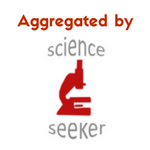Globally, infertility rates are on the rise. In Canada, one in six couples – 16 per cent – experiences infertility. As a result, infertility treatments have also risen drastically in the past two decades, with almost 100,000 babies being born via in vitro fertilization (IVF) in 2023.
Not only is delayed childbearing a factor in rising rates of infertility, but environmental and lifestyle factors also play a role, as well as medical conditions. Both male sperm quality and female fertility decline with age, and lifestyle factors such as smoking and obesity can accelerate this decline. Additionally, exposure to environmental toxins, including heavy metals, pesticides, plastics, and other endocrine disruptors, may also contribute to the multifactorial rise in infertility.
Endometriosis, polycystic ovarian syndrome (PCOS), and sexually transmitted infections (STIs) impact fertility, too. Diagnoses of endometriosis have increased by 32 per cent since 2017, and up to half of women with endometriosis experience infertility, due to scar tissue adhesions, inflammation, pelvic organ distortion, and impaired egg quality. PCOS is a disease caused by hormonal imbalances, namely excess androgens, which can make it difficult to conceive. Finally, STIs can inflame and damage reproductive organs, as well as disrupt the vaginal microbiota, increasing the likelihood of a miscarriage or ectopic pregnancy.
Given the exciting potential of stem cell regenerative therapies, it is no surprise that this field offers treatments to address infertility, whether it be by stimulating the repair and regeneration of aging or damaged organs, or even by creating and growing gametes in vitro. Below are four therapies, all in varying stages of clinical application, that may alleviate infertility, either as stand-alone approaches or in synthesis with other treatments.
PRP Therapy
Platelet-rich plasma therapy, more commonly referred to as PRP, is the injection of autologous (a donor’s own) platelets, which are abundant in growth factors, into an area of injury or damage. In the case of infertility, PRP can be injected into the ovaries, using an ultrasound for proper insertion of the transvaginal needle, or the plasma can be injected into the endometrium (called an intrauterine infusion). The growth factors available in the PRP can stimulate tissue repair and healing, leading to a thickened endometrium, improved blood flow, and/or follicle activation. PRP therapy is legal but widely used off label. In IVF centres, intrauterine infusions are the most common use of PRP, as they are used in conjunction with IVF or other treatments when they fail.
MSCs
Mesenchymal stem cells are multipotent, self-renewing stem cells found in bone marrow, fat, menstrual blood and umbilical cord. Their secretomes (the collection of bioactive molecules MSCs release) contain growth factors, cytokines, and immunomodulatory molecules, amongst other things. This is how they can stimulate repair of damaged tissue: growth factors like VEGF and HGF boost angiogenesis, anti-inflammatory cytokines like IL-10 suppress inflammation, and immunomodulatory molecules promote immune tolerance, which is essential for creating a tolerant uterine environment for the implantation of an embryo. In the context of infertility, MSCs can promote endometrial, ovarian, or even testicular regeneration. They can also be used in combination with PRP. There is early clinical use of MSCs in the uterine lining (endometrium), but in the ovaries and testis, the application is still either experimental or preclinical. Specifically in the endometrium, MSCs have been shown to downregulate fibrosis, reducing scar tissue adhesions and promoting remodelling.
Transplantation of bioengineered tissue
In the future, the field of regenerative medicine may be capable of enhancing or even completely replacing damaged reproductive organs. Human tissue can be bioengineered by either 3D printing or using decellularized tissue to make a scaffold that mimics the extracellular matrix of the organ. This is then seeded with stem cells and grown in an environment with oxygen, nutrients and mechanical stimulation. Once it is fully grown, it can be transplanted into the recipient, potentially without the need for immunosuppressive drugs if autologous stem cells are used. This is what makes bioengineered tissue transplantation a better choice than traditional organ transplantation: the absence of chronic immunosuppression required.
Although still in preclinical stages and far from human clinical use, animal studies have shown bioengineered uteri to support implantation and live births, and bioengineered human ovaries are being tested ex-vivo. In the future, fallopian tubes and testicular tissue may also be bioengineered, clinically tested, and eventually used for transplantation. Transplantation may restore natural hormone secretion of these organs, which is more ideal than temporary hormone replacement, as is used with most infertility treatments today. Of course, several large limitations exist, primarily regarding innervation and vascularization, viability and integration with the native organ, and ethical concerns.
IVG
The final fertility treatment that regenerative medicine may offer one day is currently prohibited, due to ethical considerations. In vitro gametogenesis (IVG) is the creation of gametes via induced pluripotent stem cells (iPSCs). iPSCs are adult somatic cells reprogrammed back to an embryonic-like pluripotent state, so that they can become any cell type. Scientists can guide iPSCs into becoming specific cell types of their choosing, which is why iPSCs are such an exciting development in disease treatment. In the case of IVG, iPSCs would be guided into differentiating into primordial germ cells (PGCs), which would then be placed into bioengineered ovaries or testis to develop into mature eggs or sperm, fertilized with a donor’s gamete (or another in vitro gamete), and implanted into either a bioengineered or natural uterus.
Ethical concerns aside, there are also massive genetic risks with such a procedure, such as mutations and correct DNA methylation (epigenetic changes). However, infertile individuals could theoretically have a child made of their own cells if IVG were a possibility. This could benefit postmenopausal women, cancer survivors whose gametes were destroyed by chemotherapy, and same-sex couples hoping to produce a child that is genetically theirs.
Although many, if not most, of the fertility treatments regenerative medicine may offer are still preclinical and require extensive testing, they provide hope, anticipation, and zest for the future. They are a reminder that it is an exciting time to be a part of scientific advancements, specifically stem cell therapies.
Ellie Kroeger
Latest posts by Ellie Kroeger (see all)
- The future of infertility treatments - November 18, 2025







Comments